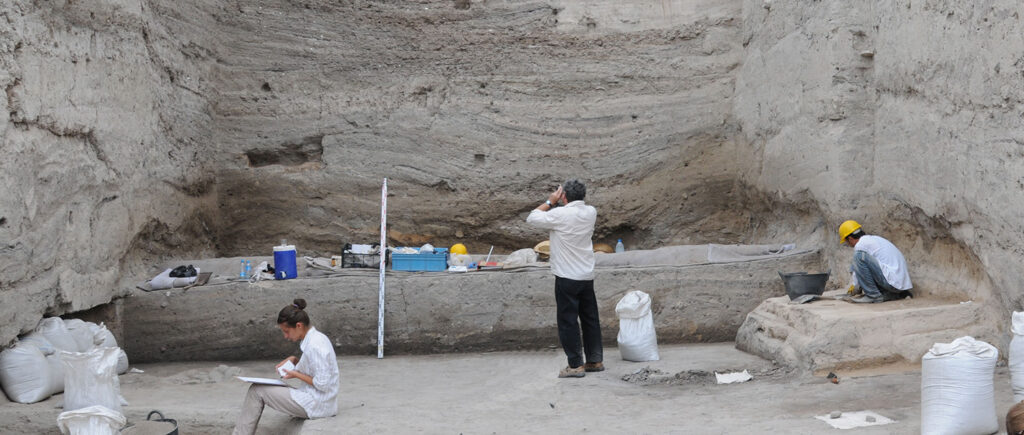Detecting the Problems of Neolithic Sheep Farmers
The study of the remains of unborn and newborn lambs shows researchers the fundamental problems our ancestors had to face in keeping sheep during the early Neolithic period (about 10,000 years ago). In order to draw conclusions on possible causes of lamb mortality in prehistoric livestock farming, it is necessary to accurately determine the age at which the animals died. A group of researchers led by the SNSB has now developed a statistical reference model for such age determination in prehistoric lambs. The scientists have published their results in the Journal of Archaeological Science.
As early as the 8th millennium BC, the first sheep farmers learned that the housing conditions of their animals had an impact on the mortality of unborn and very young lambs. In a study, an international group of researchers led by Dr. Nadja Pöllath, curator at the Bavarian State Collection for Anthropology and Paleoanatomy (SNSB-SPM), and Prof. Dr. Joris Peters, director of the same collection, examined bones of yet unborn and newborn lambs. These were unusually numerous in the findings from the Early Neolithic settlement of Aşıklı Höyük (central Turkey, ca. 8350 and 7300 BC). Over the course of the long settlement duration, lamb survival after birth appears to have improved, while fetal mortality appears to have remained about the same.

The researchers attribute the fact that the mortality of suckling lambs at Aşıklı Höyük decreased over time to improvements in livestock management such as pasturing the herds outside the settlement. The Early Neolithic site of Aşıklı Höyük is the largest and best-studied settlement in Central Anatolia and was permanently inhabited from ca. 8350 BC to ca. 7300 BC. Aşıklı Höyük provides valuable insights into architecture, culture, human and animal nutrition, vegetation, and the development of agriculture and livestock farming in the Neolithic period. While hunting was still important for the meat supply of the inhabitants at the beginning of settlement, livestock farming gained importance later on, with sheep being the most important livestock species. Evidence of abortions and thick manure packages in and between the houses prove that the inhabitants kept their sheep within the settlement for long periods of time.
In order to find out what problems Neolithic sheep farmers were confronted with and what measures they took to overcome them, it is crucial to first determine the exact age of an animal’s death. From this, the causes of death can be determined. Traditional methods for assessing an animal’s age of death are based, for example, on the examination of teeth. However, most methods are not accurate enough for distinguishing the developmental stages in young sheep – fetus, newborn, young animal. In this study, Nadja Pöllath and her colleagues developed a new statistical model to determine the age at death of sheep fetuses and lambs as accurately as possible. For the age determination, the researchers analyzed humerus bones from modern sheep of known age in reference collections in the USA, UK, Spain, Portugal and Germany. From this, they created a model that helped to accurately determine the age of prehistoric lamb finds from Aşıklı Höyük. “Our analyses have contributed significantly to narrowing down the causes of mortality in fetal and young lambs. We can now better understand the difficulties people faced during early sheep rearing and domestication in Aşıklı Höyük,” Nadja Pöllath explains. The main causes of death for fetuses and lambs, she says, were infections combined with malnutrition and underfeeding, as well as overly confined housing.
The study was carried out with funding from the DFG as part of the long-term project “The prehistoric societies of Upper Mesopotamia and their subsistence”.
Publication:
Pöllath N, García-González R, Kevork S, Mutze U, Michaela I. Zimmermann MI, Mihriban Özbaşaran M, Peters J (2021) A non-linear prediction model for ageing foetal and neonatal sheep reveals basic issues in early Neolithic husbandry. Journal of Archaeological Science DOI:10.1016/j.jas.2021.105344
https://www.sciencedirect.com/science/article/pii/S0305440321000145

